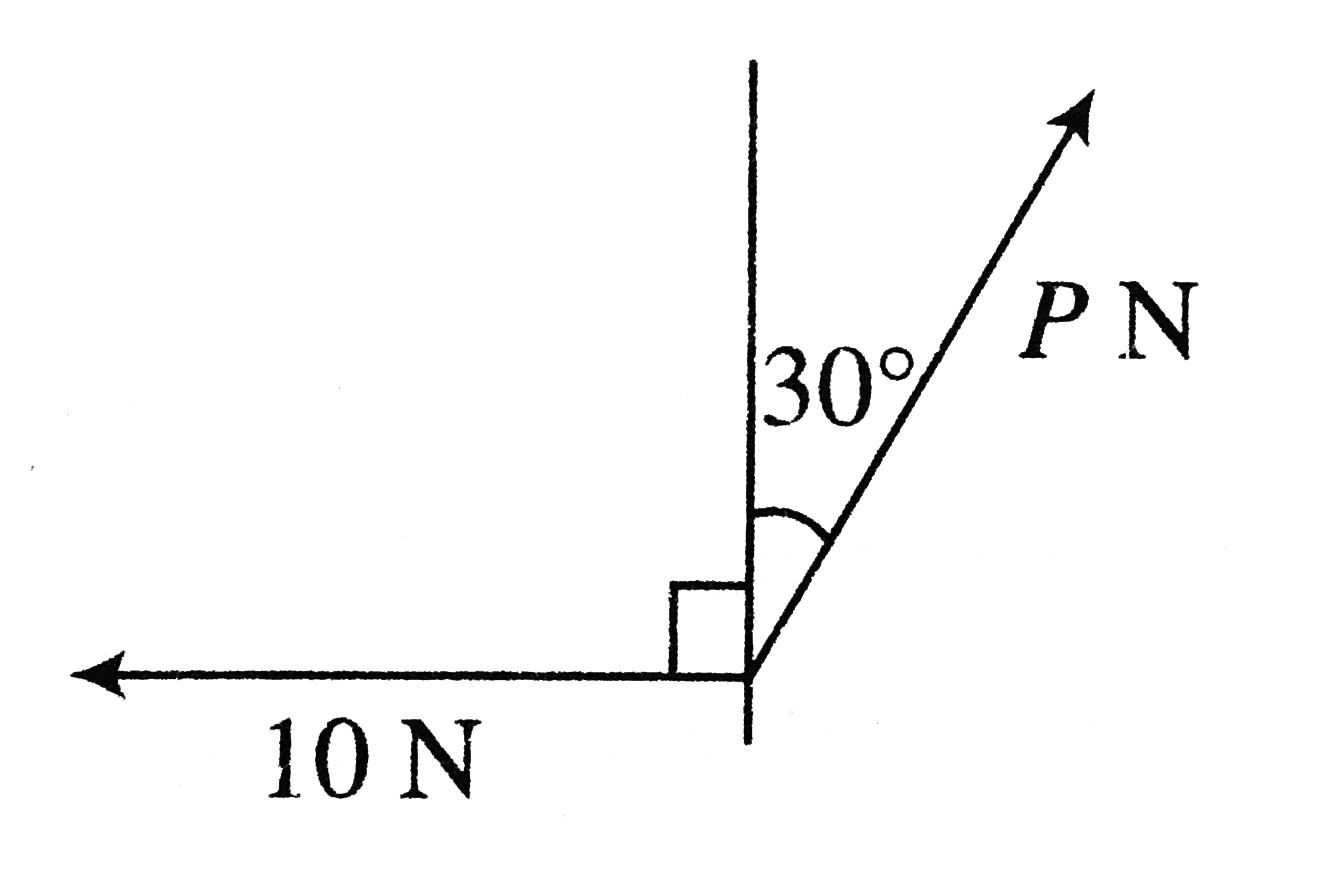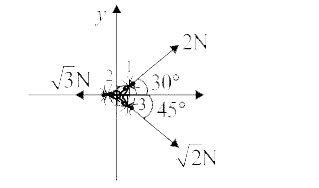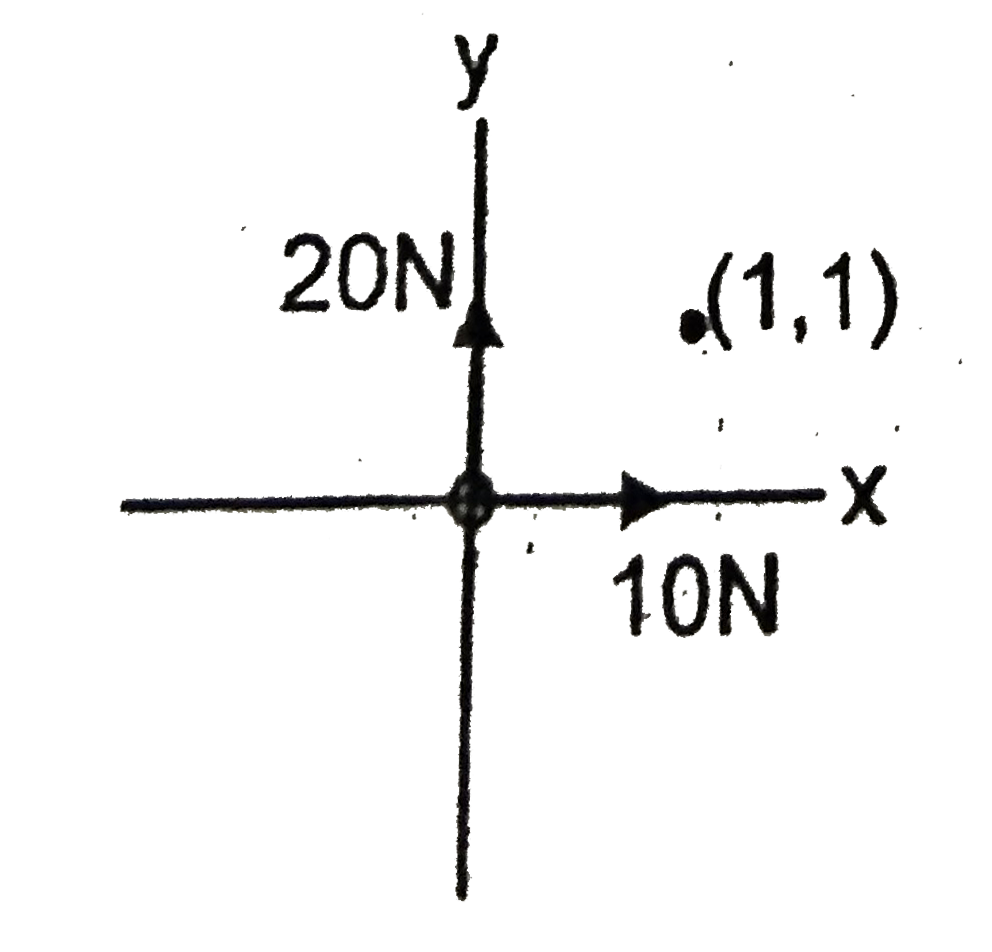Two perpendicular forces of magnitudes 10 N and 5 N act at a point. Find their resultant.
The correct Answer is:11.18 N , at an angle of 26.56∘ with 10 N force.
To find the resultant of two perpendicular forces of magnitudes 10 N and 5 N, we can follow these steps:
Step 1: Identify the Forces
Let the first force A=10N and the second force B=5N. The angle between the two forces is 90∘.
Step 2: Use the Resultant Force Formula
The formula for the resultant R of two forces acting at an angle θ is given by:
R=√A2+B2+2ABcosθ
Since the forces are perpendicular, θ=90∘, and we know that cos90∘=0.
Step 3: Substitute the Values
Substituting the values into the formula:
R=√102+52+2⋅10⋅5⋅cos90∘
This simplifies to:
R=√102+52
Calculating 102 and 52:
R=√100+25
Step 4: Calculate the Resultant
Now, we can calculate:
R=√125
To find the square root:
R=11.18N(approximately)
Final Result
Thus, the resultant of the two perpendicular forces is approximately 11.18N.
---
Let the first force A=10N and the second force B=5N. The angle between the two forces is 90∘.
The formula for the resultant R of two forces acting at an angle θ is given by:
R=√A2+B2+2ABcosθ
Since the forces are perpendicular, θ=90∘, and we know that cos90∘=0.
Substituting the values into the formula:
R=√102+52+2⋅10⋅5⋅cos90∘
This simplifies to:
R=√102+52
Calculating 102 and 52:
R=√100+25
Now, we can calculate:
R=√125
To find the square root:
R=11.18N(approximately)
Thus, the resultant of the two perpendicular forces is approximately 11.18N.
Topper's Solved these Questions
- MOTION IN A PLANEBOOK - AAKASH INSTITUTE ENGLISHCHAPTER - MOTION IN A PLANEEXERCISE - Assignement section -A Objective (one option is correct)
50 Videos
- MOTION IN A PLANEBOOK - AAKASH INSTITUTE ENGLISHCHAPTER - MOTION IN A PLANEEXERCISE - Assignement section -B Objective (one option is correct)
29 Videos
- MOTION IN A PLANEBOOK - AAKASH INSTITUTE ENGLISHCHAPTER - MOTION IN A PLANEEXERCISE - llustration 1 :
1 Video
- MOCK_TEST_17BOOK - AAKASH INSTITUTE ENGLISHCHAPTER - MOCK_TEST_17EXERCISE - Example
15 Videos
- MOTION IN A STRAIGHT LINEBOOK - AAKASH INSTITUTE ENGLISHCHAPTER - MOTION IN A STRAIGHT LINEEXERCISE - ASSIGNMENT (SECTION - D)
15 Videos
Similar Questions
Two forces of magnitude 8 N and 15 N respectively act at a point . If the resultant force is 17 N , the angle between the forces has to be
View SolutionTwo horizontal forces of magnitudes of 10N and PN act on a particle. The force of magnitude 10N acts due west and the force of magnitude PN acts on a bearing of 30∘ east of north as shown in (figure) The resultant of these two force acts due north. Find the magnitude of the resultant.

View SolutionThe resultant of two forces has magnitude 20N. One of the forces is of magnitude 20√3N and makes an angle of 30∘ with the resultant. Then what is the magnitude of the other force?
View SolutionA body of mass 5 kg is acted upon by two perpendicular forces 8 N and 6 N Give the magnitude and direction of the acceleration of the body.
View SolutionTwo forces of magnitude 3N and 4N respectively are acting on a body. Calculate the resultant force if the angle between them is
0∘
View SolutionTwo forces of magnitudes 3N and 4N respectively are acting on a body. Calculate the resultant force if the angle between them is-
180∘
View SolutionTwo forces of magnitudes 3N and 4N respectively are acting on a body. Calculate the resultant force if the angle between them is- 90
View SolutionThree ants 1, 2 and 3 are pulling a grain with forces of magnitudes 2N√3N and √2N and as shown in the figure. Find the resultant force acting on the grain.

View SolutionTwo forces of magnitudes 3N and 4N respectively are acting on a body. Calculate the resultant force if the angle between them is : (i) 0∘ (ii) 180∘ (iii) 90∘
View SolutionA particle is placed at the origin of the coordinate system. Two forces of magnitude 20N&10N act on it as shown in figure. It is found that it starts moving towards the point (1,1) . The net unknown force acting on the particle at this position can be :

View Solution